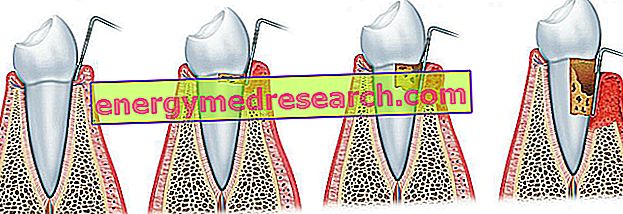
Scientific name
Ribes nigrum
Family
Saxifragaceae
Origin
Central and Eastern Europe
Used Parts
Drug given by leaves, berries and currant seeds
Chemical constituents
The chemical constituents of currant leaves are:
- Flavonoids (rutin, isoquercetin);
- proanthocyanidins;
- Ascorbic acid;
- Essential oil in traces.
The main components of currant fruits are:
- Ascorbic acid;
- Anthocyanins;
- Phenolcarboxylic acids;
- Flavonoids;
- Fruit acids (malic, citric and isocitric);
- monosaccharides;
- Pectin.
The chemical constituents of the seeds, however, are:
- Polyunsaturated fatty acids;
- Monosaccharides.
Currant in Herbal Medicine: Properties of Ribes
Currant leaves are used in infusion with anti-inflammatory, antiallergic, diuretic, tonic and sudorific activity. The fruits - or berries - instead, are used as diuretics, vitamins, refreshing and purifying.
Currants, as well as in the phytotherapeutic field, are also appreciated in the food sector. In fact, the berries are used in gastronomy, in the confectionery industry and in liqueurs.
Biological activity
The use of currant, in reality, has not obtained official approval for any type of therapeutic indication. However, different properties are attributed to the plant, including the diuretic, depurative, antiallergic, astringent, antioxidant, anti-inflammatory and anti-platelet aggregation properties.
More specifically, the leaves of the currant have been shown to possess diuretic activity, although the exact molecule responsible for this effect has not yet been accurately identified. Moreover, in some studies conducted on animals, the leaves of the plant proved to be capable of exerting hypotensive and anti-exudative activities; besides having demonstrated the ability to inhibit the release of prostaglandins.
The extracts obtained from the fruits of the currant, on the other hand, in studies carried out on animals, have been shown to possess spasmolytic and hypotensive activities, to be attributed, most probably, to the content of anthocyanins. Furthermore, these same extracts have antiseptic and antioxidant properties; the latter activity appears to be exerted through the inhibition of lipid peroxidation and through the inhibition of the xanthine-oxidase enzyme.
Other studies, on the other hand, have shown that blackcurrant extracts are able to induce apoptosis in various types of tumor cells, hypothesizing a future use of these extracts as potential antitumor agents. However, numerous clinical studies are still needed before approving similar therapeutic applications.
However - although its use has not been approved for any type of medical application - blackcurrant is part of the composition of various dietary supplements with a draining, vasoprotective and / or whose purpose is to promote regular urinary tract function and respiratory tract.
Currants in folk medicine and in homeopathy
Currant leaves are used in folk medicine as an internal remedy for the treatment of gout, rheumatism, arthritis, liver disorders (including jaundice), diarrhea, colic and cough; in addition to being used to counter painful urination and kidney stones.
Externally, however, the leaves of currant are used in traditional medicine for the treatment of wounds and insect bites.
Currant fruits, on the other hand, are used in folk medicine as an internal remedy for colds, coughs, stomach pains and diarrhea; in addition to being used as a valuable source of vitamin C. Traditional medicine uses currant fruits also for the preparation of solutions for rinses and gargles, with indications for the treatment of sore throat, hoarseness and inflammation of the oral cavity.
Blackcurrant is also used in homeopathic medicine, where it can be found in the form of mother tincture, granules, oral drops or glyceric macerate. In this field, the plant is used in case of rhinitis and allergic asthma, hay fever, osteoarticular pain, rheumatic pain and arthritis.
The amount of homeopathic remedy to be taken can vary from one individual to another, also depending on the type of disorder that must be treated and according to the type of preparation and homeopathic dilution that must be used.
Contraindications
Avoid taking currants in case of hypersensitivity to one or more components.
The use of currants is also contraindicated in patients who present edema caused by impaired renal and / or cardiac function.
Pharmacological Interactions
- diuretics: caution in the concomitant use of other diuretics for prolonged periods of time.



